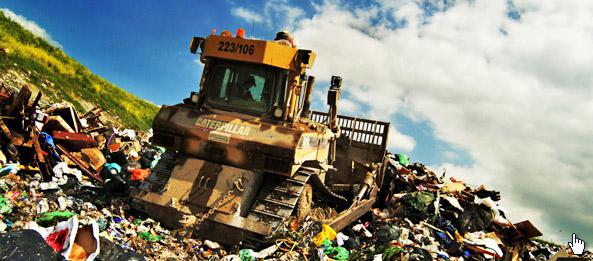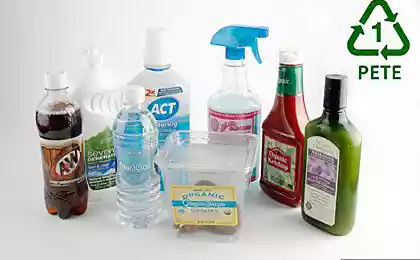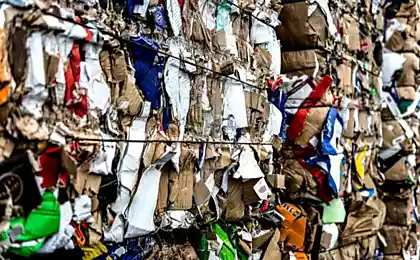1071
Recycling

Used condoms in South China processed into ribbons for hair. These ribbons are sold quite well, but some doctors are concerned about the hygienic aspects of this seems to be quite a good cause.
Much more likely that the average American will likely take the old thing in processing than he will vote.
Only in the United States annually thrown 18 billion diapers.
For the manufacture of coffins required 90,272 tons of steel, 2,700 tons of copper and bronze, and more than 9 million meters of hardwood covered with toxic laminate. The British company "Ekopod" offered an original solution to this problem by offering coffins made from 100% recycled paper.
In the United States live only 4% of the world's population, but this country is in the first place for the production of waste. In 2006, Americans throw away or have recycled 250 million tons of garbage and waste Canadians were eight times less.
Modern waste have become relatively new phenomenon - they accumulate as a result of industrial production, the production of goods for consumers and, in fact, the consumption of these products.
Even before the 20th century, most Americans and Europeans have practiced the use of waste for secondary needs. This occurs most often in agriculture. For example, in the Middle Ages tanners collected human urine for tanning animal skins. Urine was also used in the manufacture of gunpowder.
Until the 20th century, the most commonly used in the production of secondary wastes were bones. Processed bones were used for the production of buttons, gelatin, various adhesives, and paper.
In the late 19th century, hawkers goods were the main scavengers. They bought their customers unnecessary things that were more suitable for consumption and when they accumulate enough of them, they sold them in the shops of mixed goods.
After the industrial revolution, fewer and fewer people to produce their own products, the skills of craftsmen and materials used by them as irrelevant. Therefore, the remnants of materials that previously were in progress, began to throw out. The first organized landfill to waste incineration appeared in England in 1874.
In addition to the companies on mass incineration that can burn up to 800 tons of garbage a day, in the early 20th century in the US and in Europe has become a popular process called "reduction". With the reduction of mixed raw waste, which is mixed with the remains of animals, and then the resulting fatty substance used in the manufacture of soap, candles and perfumes.
Plastic bags are easier to put in the processing, and it requires less energy than the secondary use of paper bags.
Re-use of the material aluminum cans can save enough energy to run a TV for three hours.
The economic downturn in 2008 dealt a serious blow to enterprises processing waste. Cardboard, which was previously sold at $ 135 per ton, the price fell to $ 35, and plastic bottles that were previously cost 45 cents a kilo, began selling in less than 4 cents a kilogram. What brought multimillion incomes, has become a burden for many cities. Like many consumers stopped buying new homes, cars and household goods, as well as the demand of many enterprises in the secondary raw materials fell.
In 1971, Oregon became the first US state in which the law was designed to promote the collection of cans and bottles and reduce the amount of garbage. According to this law, consumers receive money for recycling containers for soft drinks and beer.
Batteries, which were produced before 1997, ought necessarily to take in processing due to high mercury content. Modern rechargeable batteries because of the high content of toxic materials also need to be processed.
Since landfill threatens overflow the earth's surface, recycling is becoming a more attractive alternative.
When all recyclable waste is also generated, which ultimately turn out to be in a landfill.
Each year, Americans throw away so many cans and bottles of soda pop, which is enough to build a twenty-one towers up to the moon.
About 50 million tons of debris from the used cell phones and computers produced annually worldwide. That's enough to circle the globe by truck to the waste by half.
More than 70% of electronic waste ends its existence in China, most of which is processed family businesses. Processing methods are often rudimentary, and they can cause serious environmental pollution and affect human health.
You can often hear that the Great Wall of China and the dump of New York City are the only people the created object visible from space. Although many astronauts claim that they were able to see these objects, only armed with optical instruments.
To filter cigarette butts and humus must twelve years. In order to decompose the aluminum can require 200 to 500 years. Synthetic diapers and sanitary pads disappear completely only after 500-800 years. Remains of Styrofoam and Styrofoam our descendants will not be able to find only five millennia, and for the disappearance from the surface of a glass bottle would take about a million years.






















